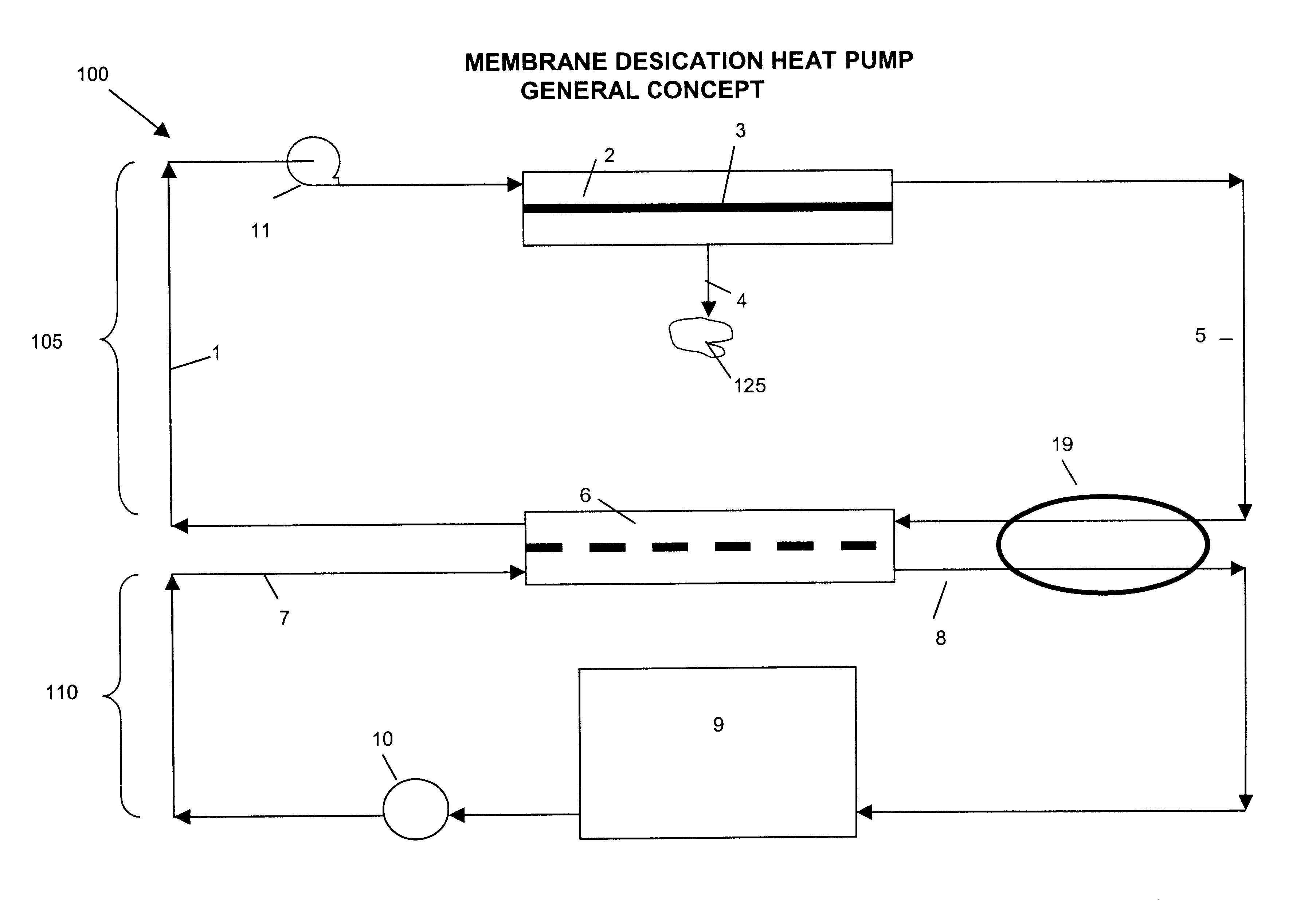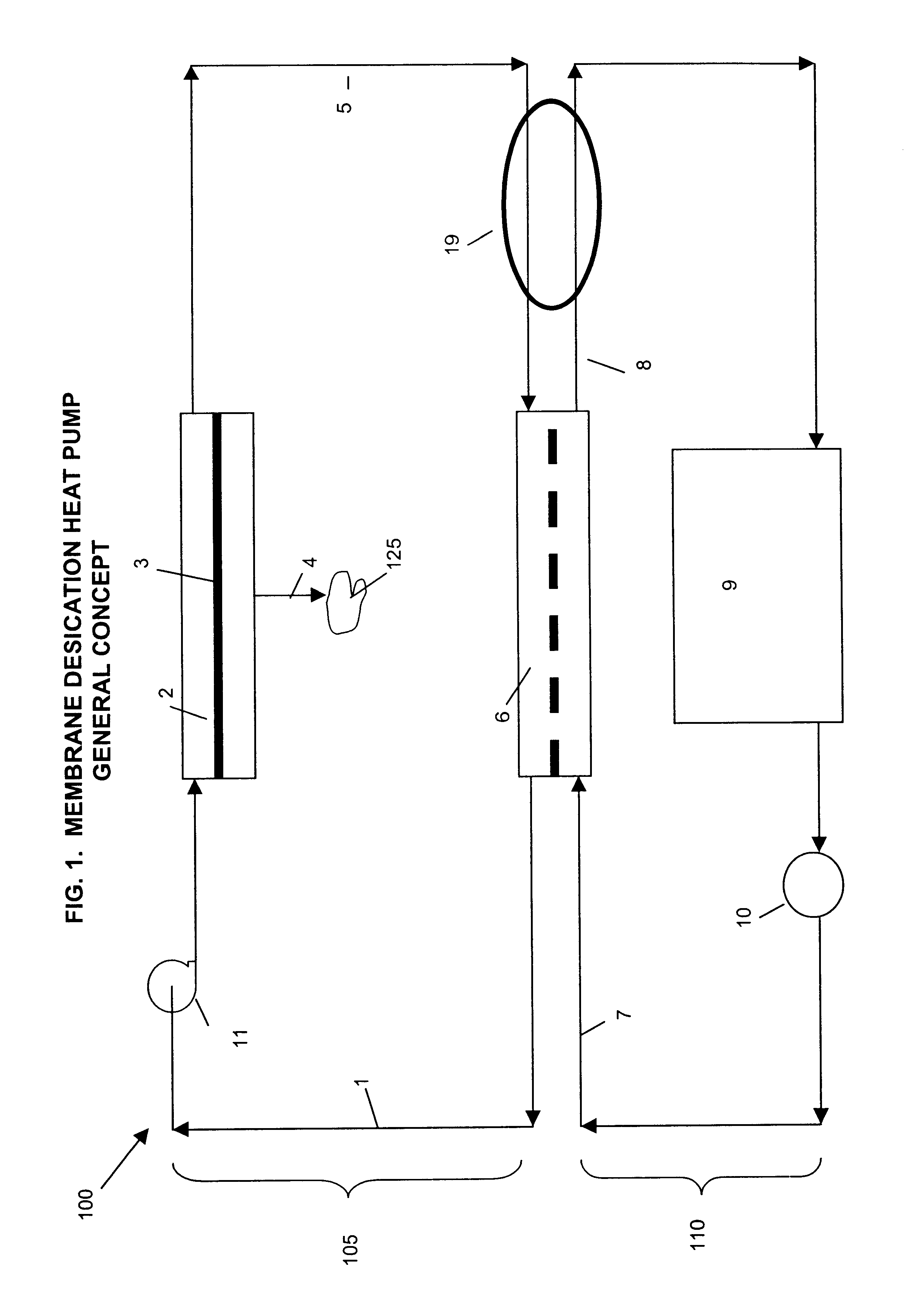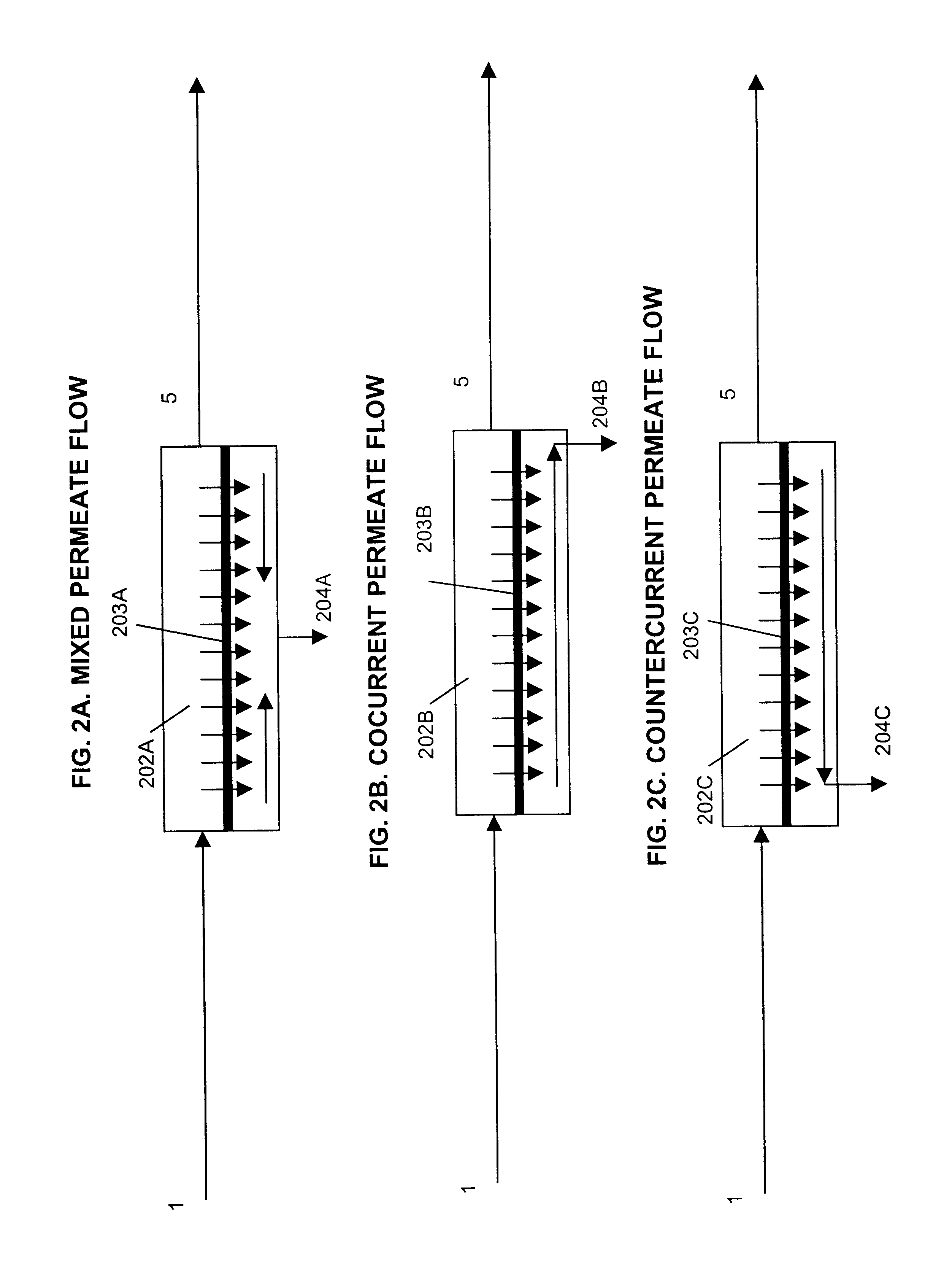Membrane desiccation heat pump
a membrane desiccation and heat pump technology, applied in the direction of heating types, domestic cooling devices, separation processes, etc., can solve the problems of large power input for the compression cycle, freon.tm. is not as efficient as freon.tm, and the gaseous environment is considered unsa
- Summary
- Abstract
- Description
- Claims
- Application Information
AI Technical Summary
Benefits of technology
Problems solved by technology
Method used
Image
Examples
Embodiment Construction
Before proceeding with a description of the present invention, it is well to define certain terms as used herein.
A heat pump is a system that utilizes a thermodynamic process that takes thermal energy from a low temperature heat source and releases it at higher temperature utilizing an input of energy from another source.
A membrane is a semi permeable barrier capable of selectively permeating certain constituents of a fluid mixture.
A membrane permeator is a self-contained assembly of membrane packaging, including all required housings and piping components, capable of rendering perm selective separation of a fluid mixture.
Desiccation is a process for removing vapor of one or more liquids out of a gas containing the vapor, resulting in vapor-depleted or dry gas. Usually this is done by an adsorption material such as a zeolite or a silica gel. However, it can be done by absorption for example, absorption of water vapor by sulfuric acid.
A fluid is a substance with no reference configur...
PUM
 Login to View More
Login to View More Abstract
Description
Claims
Application Information
 Login to View More
Login to View More - R&D
- Intellectual Property
- Life Sciences
- Materials
- Tech Scout
- Unparalleled Data Quality
- Higher Quality Content
- 60% Fewer Hallucinations
Browse by: Latest US Patents, China's latest patents, Technical Efficacy Thesaurus, Application Domain, Technology Topic, Popular Technical Reports.
© 2025 PatSnap. All rights reserved.Legal|Privacy policy|Modern Slavery Act Transparency Statement|Sitemap|About US| Contact US: help@patsnap.com



